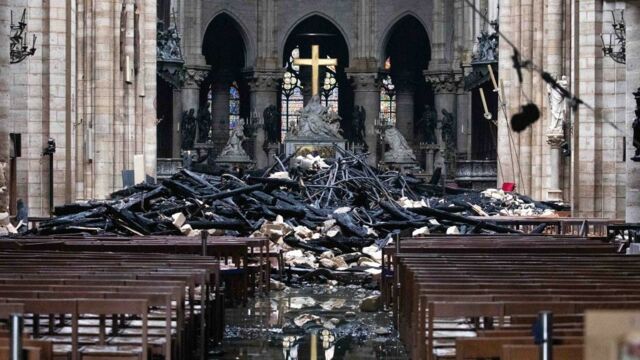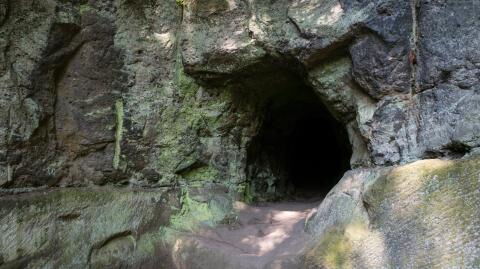The burning of Notre-Dame cathedral in Paris was a day of incredible shock and sadness throughout France as well as the world. When archaeologists were asked to survey the damage caused by the fire, they stumbled upon some unique finds which had been hidden underneath the centuries old cathedral.
Discover our latest podcast
One of the most intriguing things uncovered during the excavations in early 2022, were two lead sarcophagi hidden underneath the ruins. As per The Guardian, researchers have finally unveiled what the two mysterious sarcophagi recovered from the Notre Dame actually contains.
Archaeologists have pinpointed the origins of 2 mysterious sarcophagi discovered after the Notre Dame cathedral fire: https://t.co/ZBu1w7uLzDpic.twitter.com/ZH31phmIPj
— Artnet (@artnet) December 13, 2022
The contents of the sarcophagi
As per the report, the sarcophagi were studied by researchers from the University of Toulouse. They contained the bodies of two individuals.
One of the bodies belonged to Antoine de la Porte as per the epitaph which stated,
THIS IS THE BODY OF MR ANTOINE OF THE CANON PORTE OF THE CHURCH.
DEATH DECEMBER 24, 1710 IN HIS 83RD YEAR. REST IN PEACE
De la Porte was an important man evidenced by the fact that his body was placed underneath a central part of the transept. In his lifetime, he was very wealthy, even commissioning portraits of himself which hang in the Louvre today.
Though his coffin was made of lead, which should have ideally preserved his body, it was found in a state of advanced decomposition. He is supposed to have been afflicted by gout as well as showed signs of a sedentary lifestyle, something that would befit a person of his status.
The two sarcophagi discovered beneath Notre-Dame reveal some of their secretshttps://t.co/xD9Uy3CIxd#archeologie#archeology#archaeologylife#Archaeology#bestoftheday#ancienthistory#ancient#history#wonderful
— Archeology (@jntribolo) December 12, 2022
The second sarcophagus
The second body recovered in the other sarcophagus could not be identified, and the person has been nicknamed ‘Le Cavalier’ by the researchers. The placement of the body shows that he must have been of some prominence in society.
The skull showed deformity which could have happened due to headdress imposed on him as a baby. The person also showed signs of chronic disease and had teeth that had been damaged before death.
Lead scientist Christophe Besnier is quoted by the report as saying,
If the date of his death was around the second half of the 16th century or early 17th century, we may be able to identify him in the death register that we have. If it’s earlier than that, we probably won’t ever know who he was.
The human remains would are not ‘archaeological objects’ and therefore would be treated with respect and returned to the culture ministry by the team, who would decide what would happen to them.
Sources used:
The Guardian: ‘Notre Dame’s uncovered tombs start to reveal their secrets’
Université Toulouse: 'Fouille en laboratoire des deux sarcophages de Notre-Dame de Paris'















